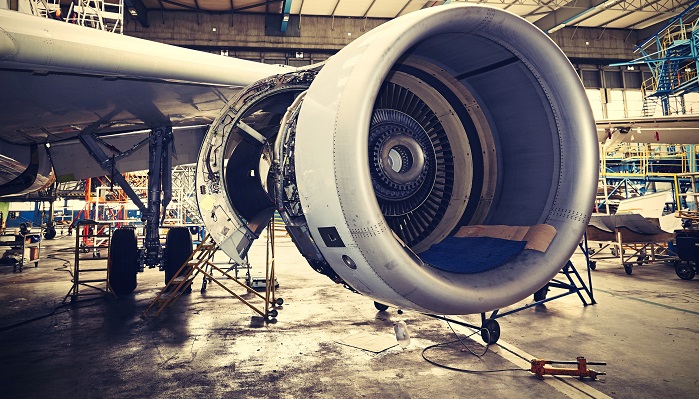Regulatory Standards and Requirements for Inspection
145.A.25 Facility requirements The organisation shall ensure that:
Lighting is such as to ensure each inspection and maintenance task can be carried out in an effective manner.
Noise shall not distract personnel from carrying out inspection tasks. Where it is impractical to control the noise source, such personnel are provided with the necessary personal equipment to stop excessive noise causing distraction during inspection tasks.
Performing an Effective Aircraft Maintenance Inspection
It may be considered that one of the most important tasks the maintenance engineer performs is that of performing an Aircraft Maintenance Inspection.
The inspector is there to physically assess the wellbeing of the aircraft, engine, zone or component as required by the maintenance instructions. It is on the “say so” of the Inspector whether the aircraft continues to fly.
The responsibility is significant, consider how many times Japan Airlines Flight 123 was inspected over a 7 year period before the catastrophic failure of the rear pressure bulkhead.
Basis for Inspection
The first step is to understand the reason for the Inspection, for example is it part of a zonal Inspection, or is it related to another document. If so are you familiar with this document?
What is the periodicity of the inspection, for example if you are looking at an item or area as part of a 6000 hour inspection, then you are basically saying that everything is good for another 6000 hours.
Competence of the Inspector
Who is going to perform the inspection?
Have they been assessed as competent to perform the inspection?
Please consider that a qualified licensed aircraft engineer does not automatically become a competent aircraft inspector. (There is a learning path and as with most things practice makes perfect.)
The Role of Mentor is very much suited to the development of appropriate aircraft inspection skills.
Preparation for Inspection
What preparation and or cleaning of the item being inspected is required?
Is this sufficient for you to be able to perform the inspection.
********Personal Action Point********
Please never forget that you MUST satisfy yourself that the area is ready for you to inspect. It is not possible to inspect a dirty area. (Even it should be a matter of personal pride that you fully engage with the task because you understand the importance of what you are doing.)
If the area is not ready clean it or get it cleaned – it is important and one day could save lives!
Are there any special requirements related to the inspection which need to be considered? such as unusual surface preparation (etching, paint removal) or the temperature range over which the inspection is effective.
Do you have all the necessary equipment to facilitate access, to provide illumination (as required) or to provide magnification (as required).
Performing the Inspection
Are you knowledgeable concerning the specific description of the area to be inspected?
What Inspection Instructions are available for carrying out the inspection?
What are you actually looking for during this inspection? (Accept/reject criteria. Based on what standard?)
What would be the typical description of the defect to be detected, (preferably with an illustration of a sample defect)
Evaluation
Consider the applicable procedures for establishing inspection reliability. Reporting procedures and requirements.
Return to Normal Configuration.
Are there any post inspection cleaning or restoration tasks applicable?
********Personal Action Point********
Do we have all the prerequisites in place (are we comfortable)? – lighting, vision, access
It is never the intention of the inspector to deliberately commit an error by missing something during an Inspection, it happens for a range of reasons!
For example – Lack of familiarity – New to the area or process, not aware of relevant documentation.
Complacency – seen it all before many times – been there done that!
Often it is the unreported events which form a significant portion of the HF exposure within the Maintenance Department, in isolation the exposure may appear low, however in combination with other exposures the HF related action may trigger an unwanted or unwelcome outcome.
How to deal with this issue in a proactive way?
To ensure all persons have an awareness of the potential exposure or “knock on effect” of even the smallest human related error.
How long should we work without a break? Typically after 25 – 30 mins we start to loose focus
Consider the role of CS25 in support of Aircraft Inspection.
What happens with STC – what are the responsibilities of the Supplemental Type Certificate Holder (STCH)?
Review the following document: CS 25.1707 System Separation; EWIS(See AMC 25.1707)
Sofema Aviation Services provides more than 300 EASA Compliant Regulatory and vocational short courses for details please see www.sassofia.com or email office@sassofia.com
Tags:
Aircraft Inspection, CS25, EASA Aircraft Inspector, Regulatory Standards and Requirement




